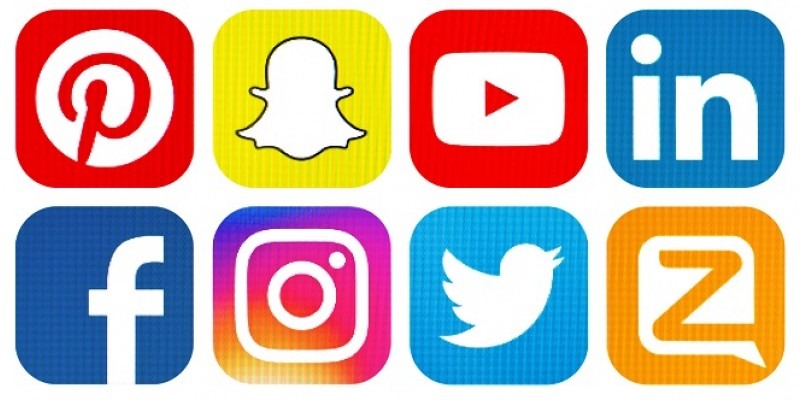
The value of social media marketing for business purposes is obvious, with the habits of the younger generation completely changing the way in which businesses communicate with consumers, it has become a must have tool in the marketing mix.
Social media is constantly evolving and while approaching a marketing strategy on the channel can be daunting, it can be an unparalleled method of reaching customers and driving business objectives, when implemented correctly.
Organic Social
The top synonym of ‘organic’ in the Oxford Dictionary is ‘natural’ and this is how you should view organic social - using social media for your business the way you would a personal account, naturally gaining followers through strong content, likes and hashtags. This approach is particularly popular with small businesses, as it doesn’t require any upfront costs. If your business already has a good following, organic social is a great way of keeping your customers up to date with the latest product news.
Towards the end of 2017, organic social (for business purposes) began losing momentum. Facebook, Instagram and Twitter continually update their algorithm to optimize user experience and businesses using social media for promotional purposes are now getting less exposure, especially on Facebook. There have been several theories as to why these changes have been made, however a push to get businesses to pay for advertising is probably the most likely.
The best course of action to maximize the impact of organic social is to understand your customer and what content they want to see, then deliver it. Organic posts that get good engagement will still be an asset to your overall marketing strategy – the algorithms used by social media platforms are designed to identify and reward engaging content so if you have a strong strategy, consumers are more likely to be exposed to your communications.
Paid Social
Traditionally larger businesses were the main users of paid social as they had the capital to throw around and could afford to go that little bit further with their social strategy. However, smaller companies are recognizing how fast the return can be from paid social advertising and are gradually working it into their marketing budget.
Sophisticated paid for social advertising can be easily implemented across all the main social media platforms. When you set up a Facebook campaign, for example, you can target customers through a broad variety of metrics including age, gender, geographical location, interests and behavior. A budget for the campaign can be set along with the way in which the business is charged; whether that be CPC (cost per click) or Impression (people viewing your ad). Paying for the campaign means you get instant results, with your target audience reached as soon as the advert goes live.
Adding investment into your paid marketing campaigns can also support some of the key social media trends for 2018, keeping your business at the cutting edge. One of the biggest trends supported by paid social is ‘Ephemeral’ content. The latest buzz word in social media marketing refers to content or live video that disappears after a certain time. This was first made mainstream by Snapchat and further popularized by Instagram Stories. It is a great way to advertise product launches or short term offers, as the consumer won’t get confused with dated content lingering around after the promotion has finished.
Influencers
Influencer marketing remains on the rise for 2018 and setting aside budget for this channel is becoming increasingly important, especially if your business is based in the lifestyle/ fashion sector. Many social media influencers work on their blogs full time, which means the days of sending products for free in return for a shout out are long gone.
Now, a new wave of influencer agencies are negotiating rates for posts, with bloggers expecting a fee on top of the product. Don’t let this deter you however, consumers are 30% more likely to buy a product from a blogger than a celebrity, which makes spokesperson marketing suddenly more affordable and effective. Generation Z are also particularly important when it comes to influencer marketing, 73% of this age group (11 to 19) “feel close” to YouTube personalities and trust their recommendation – meaning the future of marketing could lie within this approach.
With the worldwide popularity of messaging platforms, in 2018 we expect to see more consumers looking to communicate with brands over Facebook, Instagram and Twitter in a live environment. Contacting companies via phone is dropping in favour of being able to get instant replies through on-site instant messaging support or company social media profiles, resulting in the need for increased online resource.
Larger companies are gravitating toward highly sophisticated chatbots and AI to meet the demand for this method of communication. However, smaller businesses can get in on the action as well, creating relatively simple chatbots using tools like Chatfuel, with walk through guides relatively easy to find online.
Allocating money for your paid social budget does more than just allow you to place ads, it allows you to find the resource to stay ahead of your competitors and reach your consumers on an individual basis. Stay ahead of the game in 2018 and investigate how these trends can enhance your business marketing strategy and ensure a prosperous year for your business.
About the author
Chris is a freelance consultant offering small businesses advice on transitioning into digital, as well as general marketing advice and consultation.
Continue the debate at our upcoming event Is Organic Social Reach Dead? on Wednesday 28th February at the Everyman Theatre, Bristol.
- Log in to post comments
